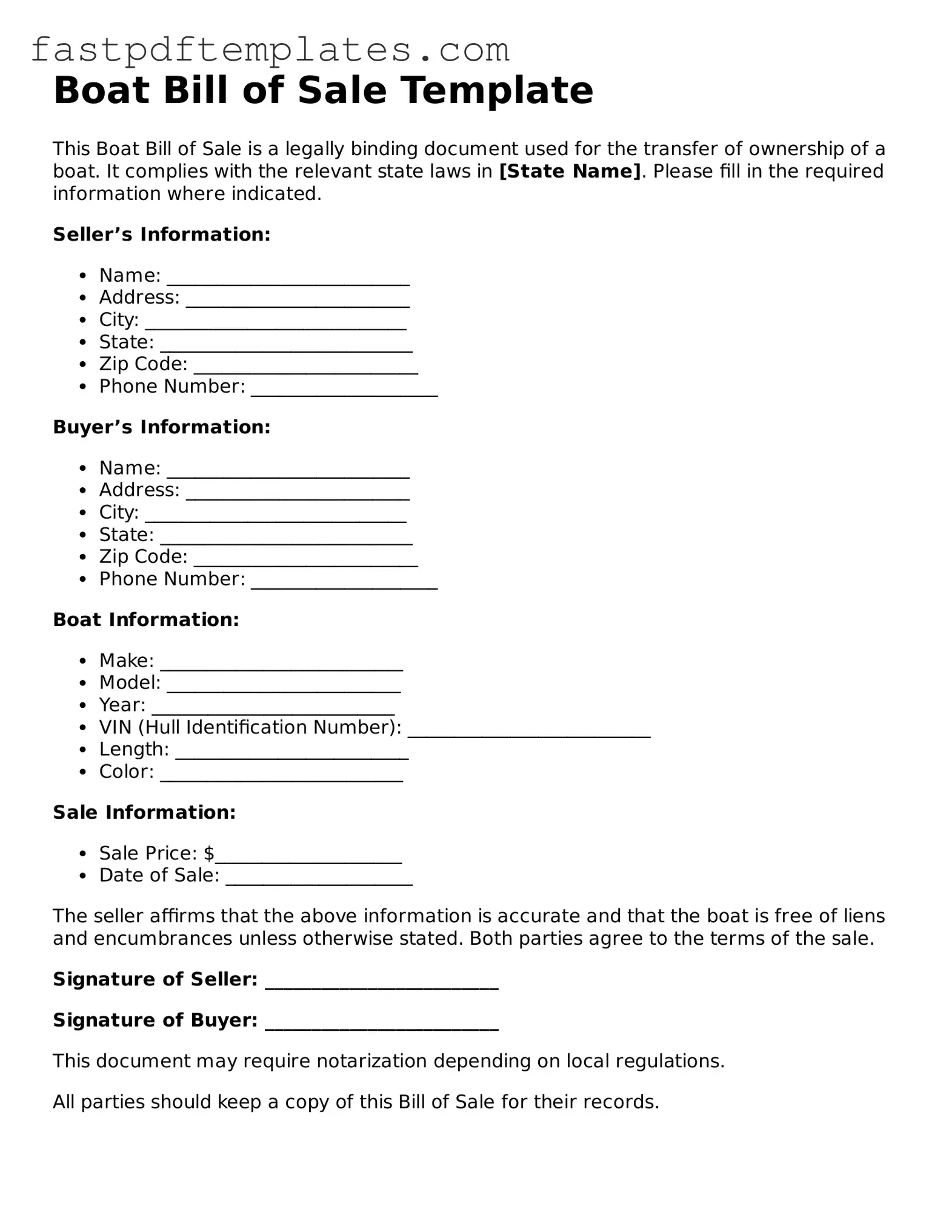The Boat Bill of Sale form shares similarities with the Vehicle Bill of Sale form. Both documents serve as proof of ownership transfer for a specific type of property. When someone buys or sells a vehicle, the Vehicle Bill of Sale outlines the details of the transaction, including the buyer and seller's names, the vehicle's identification number, and the sale price. Similarly, the Boat Bill of Sale captures essential details about the boat, such as its hull identification number, make, model, and the agreed-upon sale price. Both forms also protect the interests of both parties by providing a written record of the transaction, which can be useful in the event of disputes or for future reference.
Another document akin to the Boat Bill of Sale is the Real Estate Purchase Agreement. This agreement outlines the terms under which a buyer agrees to purchase a piece of property from a seller. Like the Boat Bill of Sale, it includes critical information such as the parties involved, a description of the property, and the purchase price. Both documents serve as formal contracts that signify the buyer's intention to acquire the asset and the seller's willingness to transfer ownership. The Real Estate Purchase Agreement also typically includes contingencies and conditions, similar to how a Boat Bill of Sale might specify any warranties or guarantees regarding the boat's condition.
The Aircraft Bill of Sale is another document that resembles the Boat Bill of Sale. Just as the Boat Bill of Sale confirms the transfer of ownership of a boat, the Aircraft Bill of Sale does the same for an aircraft. Both documents require specific details about the asset being sold, including its identification numbers and a description of its condition. They also serve as legal proof of the transaction, which is crucial for registering the aircraft or boat with the appropriate authorities. In both cases, these documents help ensure that the transfer of ownership is clear and legally binding.
Lastly, the Personal Property Bill of Sale is similar to the Boat Bill of Sale in that it can be used for various types of personal property transactions, including boats. This document provides a record of the sale and includes information about the buyer, seller, and the item being sold. While the Boat Bill of Sale is specifically tailored for boats, the Personal Property Bill of Sale can cover a broader range of items, such as furniture, electronics, or collectibles. Both documents serve the same fundamental purpose: to create a clear record of ownership transfer and protect the rights of both parties involved in the sale.
